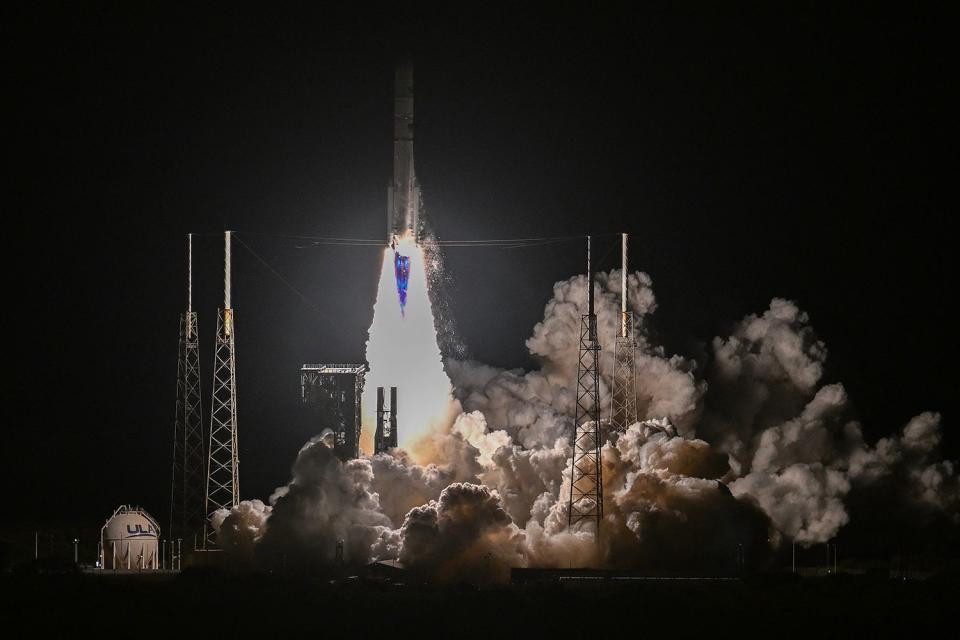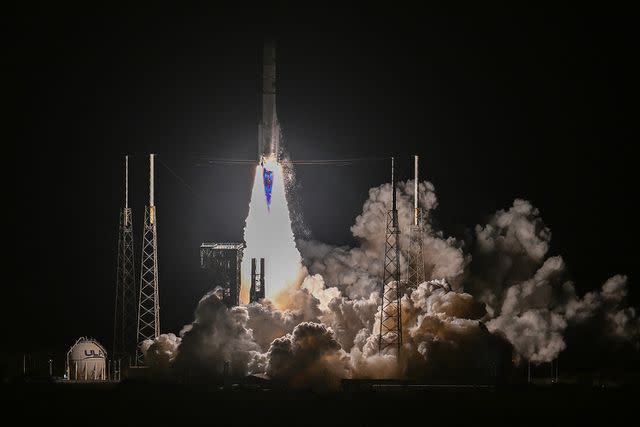First U.S. Moon Landing in Almost 50 Years Jeopardized by 'Critical' Leak After Launch
The Peregrine lunar lander ran into trouble shortly after it separated from United Launch Alliance’s Vulcan rocket on Monday

CHANDAN KHANNA/AFP via Getty
United Launch Alliance's (ULA) Vulcan CentaurThe first moon landing in more than 50 years is in jeopardy due to a fuel leak.
The Peregrine lunar lander ran into trouble shortly after it separated from United Launch Alliance’s Vulcan rocket during Monday’s mission, according to an announcement from Astrobotic Technology, the company that developed the spacecraft.
A failure with the lander’s propulsion system made it difficult for the Pittsburgh-based company to get the solar panel pointed toward the sun so it could charge its batteries, which reached critically low levels at one point.
Eventually, Astrobotic said crews were “successful in reorienting Peregrine’s solar array toward the sun.” However, the failure with the lander’s propulsion system caused “a critical loss in propellant,” which “threatens” the spacecraft’s ability to land softly on the moon.

CHANDAN KHANNA/AFP via Getty
Related: NASA Finds ‘Christmas Tree Cluster’ Twinkling in Space — See the Stunning Photos!
“The team is trying to stabilize the loss,” Astrobotic said in a post shared just after 1 p.m. EST, “but given the situation, we have prioritized maximizing the science and data we can capture.”
Joel Kearns, deputy associate administrator for exploration at NASA’s Science Mission Directorate in Washington said scientists “will use this lesson to propel our efforts to advance science, exploration, and commercial development of the Moon.”
“Each success and setback are opportunities to learn and grow,” Kearns added.
Never miss a story — sign up for PEOPLE's free daily newsletter to stay up-to-date on the best of what PEOPLE has to offer, from celebrity news to compelling human interest stories.
Peregrine was originally expected to land on the moon on Feb. 23 for a 10-day mission, during which NASA said it would study the surrounding environment. NASA hopes the mission will help them advance human missions on the moon moving forward, according to a Jan. 4 blog post.
The launch of the Peregrine lunar lander is part of NASA’s new Artemis program, which aims to get astronauts back on the moon’s surface in the coming years.
As part of the program, NASA promises to “collaborate with commercial and international partners and establish the first long-term presence on the Moon” by utilizing “innovative technologies to explore more of the lunar surface than ever before.”
In November 2022, NASA completed an unmanned flight test of the Space Launch System and the Orion spacecraft around the Moon. The second phase, which is expected to take place no earlier than November 2024, will be a 10-day manned flight test.
In the third and final phase, currently slated for 2025, NASA will send the first humans “to explore the region near the lunar South Pole” in what is expected to be “humanity’s first return to the lunar surface in more than 50 years.”
For more People news, make sure to sign up for our newsletter!
Read the original article on People.


